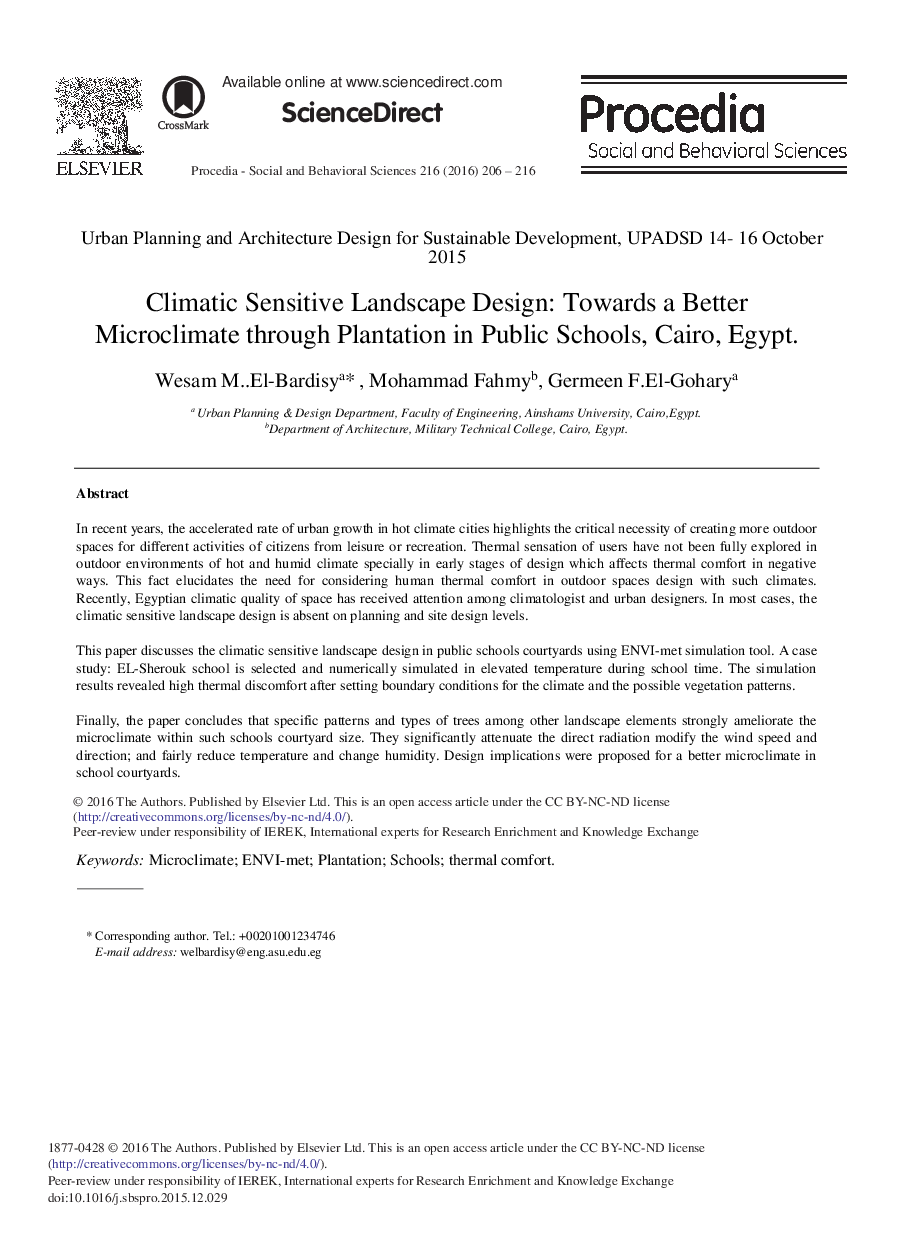| کد مقاله | کد نشریه | سال انتشار | مقاله انگلیسی | نسخه تمام متن |
|---|---|---|---|---|
| 1108729 | 1488343 | 2016 | 11 صفحه PDF | دانلود رایگان |

In recent years, the accelerated rate of urban growth in hot climate cities highlights the critical necessity of creating more outdoor spaces for different activities of citizens from leisure or recreation. Thermal sensation of users have not been fully explored in outdoor environments of hot and humid climate specially in early stages of design which affects thermal comfort in negative ways. This fact elucidates the need for considering human thermal comfort in outdoor spaces design with such climates. Recently, Egyptian climatic quality of space has received attention among climatologist and urban designers. In most cases, the climatic sensitive landscape design is absent on planning and site design levels.This paper discusses the climatic sensitive landscape design in public schools courtyards using ENVI-met simulation tool. A case study: EL-Sherouk school is selected and numerically simulated in elevated temperature during school time. The simulation results revealed high thermal discomfort after setting boundary conditions for the climate and the possible vegetation patterns.Finally, the paper concludes that specific patterns and types of trees among other landscape elements strongly ameliorate the microclimate within such schools courtyard size. They significantly attenuate the direct radiation modify the wind speed and direction; and fairly reduce temperature and change humidity. Design implications were proposed for a better microclimate in school courtyards.
Journal: Procedia - Social and Behavioral Sciences - Volume 216, 6 January 2016, Pages 206-216